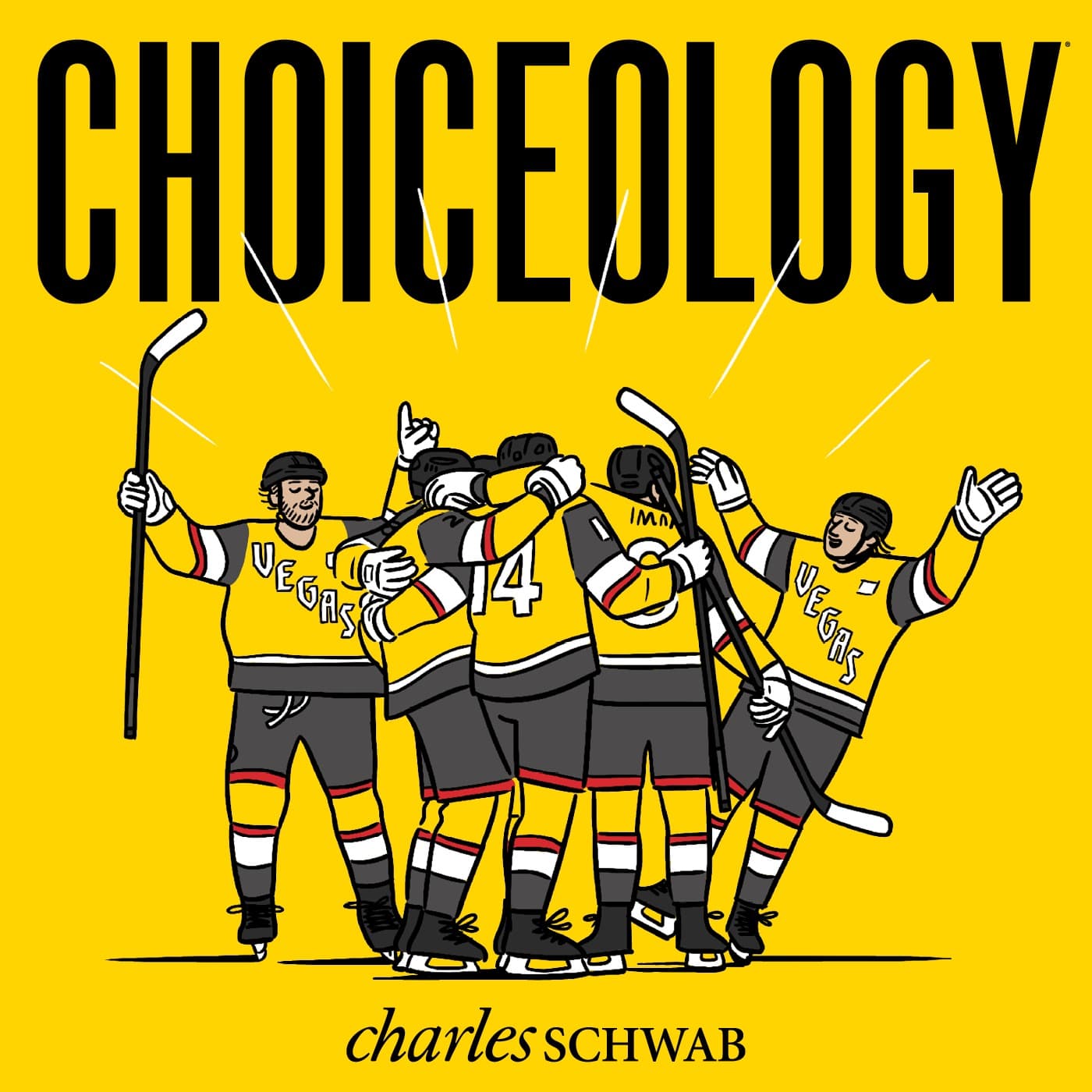The Golden Misfits: With Guests Gary Lawless & Erika Kirgios
What is the difference between buying groceries for the whole week versus grabbing something to eat on the way home each day? Grouping choices together so that you make a bunch of selections all at once can seem daunting, but it can actually help you reach your goals faster.
In this episode of Choiceology with Katy Milkman, we look at how taking a bird's eye view on a series of selections can help create better results overall.
Most sports teams take years to establish themselves as contenders. But sometimes, a brand-new team is able to use its inception—a one-time opportunity to build something up from scratch—to its advantage. Las Vegas finally got its first professional sports team in 2017 with an NHL team called the Golden Knights. The initial reaction to the team’s roster was muted at best. The players they chose were drafted from teams that did not want them. But a surprising playoff run in the team’s first year hinted at what was yet to come for the newcomers, dubbed the "Golden Misfits."
Gary Lawless recounts the underdog story that shocked the hockey world.
Gary Lawless is a hockey writer working for the 2023 Stanley Cup winners, the Vegas Golden Knights. He is also the author of Vegas Golden Knights 2023 Stanley Cup Champions Book: "It Hurts to Win."
Next, Katy speaks with Erika Kirgios about research that shows how wider versus narrower choice "brackets" can affect selection decisions.
You can read more in the paper Erika co-authored with Katy and others, called The Isolated Choice Effect and Its Implications for Gender Diversity in Organizations.
Erika Kirgios is an assistant professor in the behavioral science department at the University of Chicago Booth School of Business. Erika is a former PhD student of Katy's at the University of Pennsylvania's Wharton School of Business.
If you enjoy the show, please leave a rating or review on Apple Podcasts.
Learn more about behavioral finance.
Explore more topics
The comments, views, and opinions expressed in the presentation are those of the speakers and do not necessarily represent the views of Charles Schwab.
Data contained herein from third party providers is obtained from what are considered reliable source. However, its accuracy, completeness or reliability cannot be guaranteed and Charles Schwab & Co. expressly disclaims any liability, including incidental or consequential damages, arising from errors or omissions in this publication.
All corporate names and market data shown above are for illustrative purposes only and are not a recommendation, offer to sell, or a solicitation of an offer to buy any security. Supporting documentation for any claims or statistical information is available upon request.
Investing involves risk including loss of principal.
Diversification strategies do not ensure a profit and do not protect against losses in declining markets.
The book How to Change: The Science of Getting from Where You Are to Where You Want to Be is not affiliated with, sponsored by, or endorsed by Charles Schwab & Co., Inc. (CS&Co.). Charles Schwab & Co., Inc. (CS&Co.) has not reviewed the book and makes no representations about its content.
Apple, the Apple logo, iPad, and iPhone are trademarks of Apple Inc., registered in the U.S. and other countries. App Store is a service mark of Apple Inc.
Android is a trademark of Google LLC. Use of this trademark is subject to Google Permissions.
Spotify and the Spotify logo are registered trademarks of Spotify AB.



